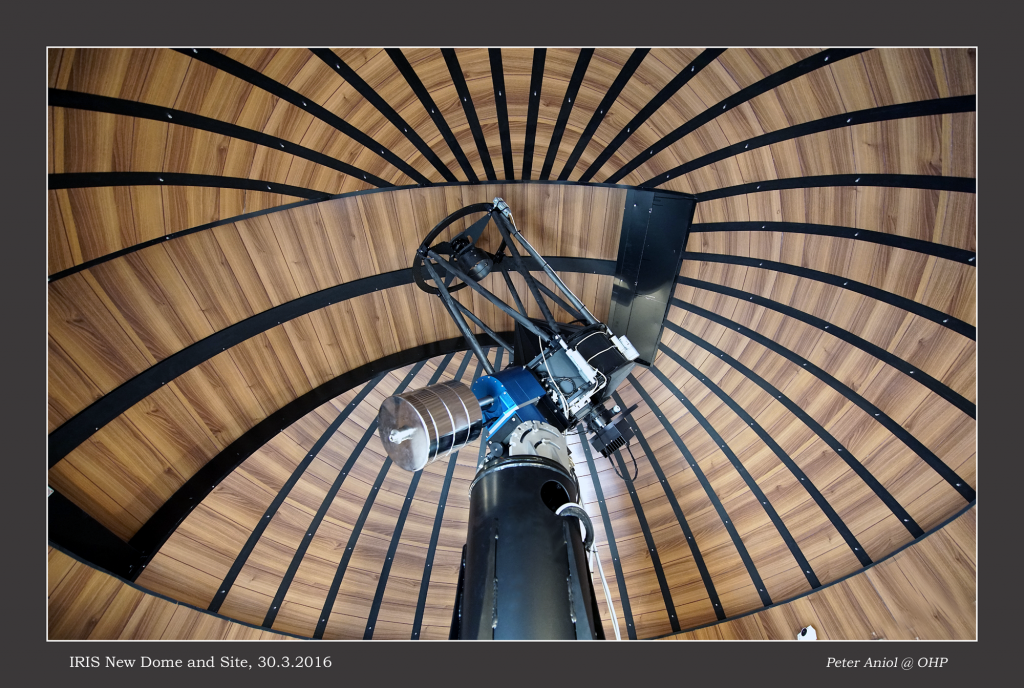IRiS Robotic Telescope

IRiS (Initiation à la Recherche en Astronomie pour les scolaires, Initiation to Research in Astronomy for Schools) is a robotic telescope that was installed in 2013 on the site of the Observatoire de Haute de Provence, France, in order to allow the discovery of the transient sky, while offering the opportunity to discover modern observational techniques.
🔭 The Telescope
The telescope is a Ritchey-Chrétien type telescope with a diameter of 50 cm mounted on a German-type mount and equipped with a focal plane composed of a camera equipped with an E2V 42-40 sensor (2kx2k), a filter wheel, and filters (SDSS u, g, r, i, z, as well as narrow bands centred on the H-alpha and OIII lines).
The entire telescope and its equipment can be fully controlled remotely in order to follow-up automatically interesting transients or perform a series of targeted exposures of known galaxies to find optical counterparts of gamma-ray bursts, gravitational waves, and neutrino events.
In addition, a web interface gives access to all the environmental data related to the observatory (AllSky camera, weather station, seeing monitor, etc.).
🎓 Education
IRiS is a real educational program to provide students from college to Master’s level privileged access to a telescope whose operating mode and technical characteristics, aside from its diameter, are very similar to the telescopes currently used by professional astronomers.
👥 Team
Stéphane Basa (LAM), Auguste le Van Suu (OHP), David Corre (LAM)
Partners
Labex OCEVU (project management, telescope financing, etc.)
Labex FOCUS (financing of the camera)
Paris Observatory (infrastructure financing)
Science at the School (financing of computer licenses, small equipment, etc.)
LAM and Observatoire de Haute-Provence/OSU-Pytheas provide human resources and hosting.

